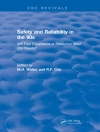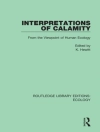Machine Learning for Subsurface Characterization develops and applies neural networks, random forests, deep learning, unsupervised learning, Bayesian frameworks, and clustering methods for subsurface characterization. Machine learning (ML) focusses on developing computational methods/algorithms that learn to recognize patterns and quantify functional relationships by processing large data sets, also referred to as the "big data." Deep learning (DL) is a subset of machine learning that processes "big data" to construct numerous layers of abstraction to accomplish the learning task. DL methods do not require the manual step of extracting/engineering features; however, it requires us to provide large amounts of data along with high-performance computing to obtain reliable results in a timely manner. This reference helps the engineers, geophysicists, and geoscientists get familiar with data science and analytics terminology relevant to subsurface characterization and demonstrates the use of data-driven methods for outlier detection, geomechanical/electromagnetic characterization, image analysis, fluid saturation estimation, and pore-scale characterization in the subsurface. – Learn from 13 practical case studies using field, laboratory, and simulation data- Become knowledgeable with data science and analytics terminology relevant to subsurface characterization- Learn frameworks, concepts, and methods important for the engineer’s and geoscientist’s toolbox needed to support
Jiabo He & Hao Li
Machine Learning for Subsurface Characterization [EPUB ebook]
Machine Learning for Subsurface Characterization [EPUB ebook]
ซื้อ eBook เล่มนี้และรับฟรีอีก 1 เล่ม!
ภาษา อังกฤษ ● รูป EPUB ● ISBN 9780128177372 ● สำนักพิมพ์ Elsevier Science ● การตีพิมพ์ 2019 ● ที่สามารถดาวน์โหลดได้ 3 ครั้ง ● เงินตรา EUR ● ID 6776704 ● ป้องกันการคัดลอก Adobe DRM
ต้องใช้เครื่องอ่านหนังสืออิเล็กทรอนิกส์ที่มีความสามารถ DRM












